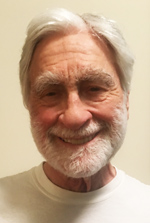Exodus 33:12-34:26

LA JOLLA, California — Moses, ‘following G-d’s orders,’ carves a second pair of tablets following which he receives additional orders regarding entrance to the promised land: Ch. 34: vv. 12-13 “Beware of making a covenant with the inhabitants…No, you must tear down their altars, smash their pillars, and cut down their sacred asherim).”
According to Nahum Sarna, who wrote the Jewish Publication Society’s Commentary on the Book of Exodus (1991), “ashram are pagan cultic objects… They derive their name from the (Babylon) goddess…Ashrat…She bears the titles, “bride of the king of heaven” and “mistress of sexual vigor and rejoicing.” In Ugarit, she is “…Athirat, consort of …the head of the pantheon,…termed “the progenitrix of the gods, mother of the gods…” In 2 Kings 23:7 she is associated with sacred prostitution (p.217), up to the time of King Josiah (622 BC), who destroyed all those symbols.

What this suggests is that some of the Israelite population, even after such a late date post-Moses, had assimilated Canaanite culture.
Found at site:
The small site [2] is a single-layer site, believed likely to have been occupied for no more than 25 years. It is too small to have been an inn or a trade station.
Analysis of the clay in the jars indicated that it came from far-away Jerusalem. The inscriptions suggest religious motifs, written by a literate elite scribe and a scribal student.
It would have been convenient for King Yoash to provision this site, clearly nearer to Judah, with supplies from Judah.
To add to the controversy, the hint here is that the god of Israel, early on, had a wife! In support of this, it has long been known that households with Jewish hallmarks, in the First Temple era and later too, also contained images of other gods in the form of figurines.
Though all of this is controversial with scholarly voices in dispute, this data suggest that as late as the early 8th century BE, the idea of a single deity had not yet consolidated for the Jewish nation.
[2] A Strange Drawing Found in Sinai Could Undermine Our Entire Idea of Judaism, by correspondent Nir Hasson, Haaretz, April 4, 2018.
*
Irv Jacobs is a retired medical doctor who delights in Torah analysis. He often delivers a drosh at Congregation Beth El in La Jolla, and at his chavurah.